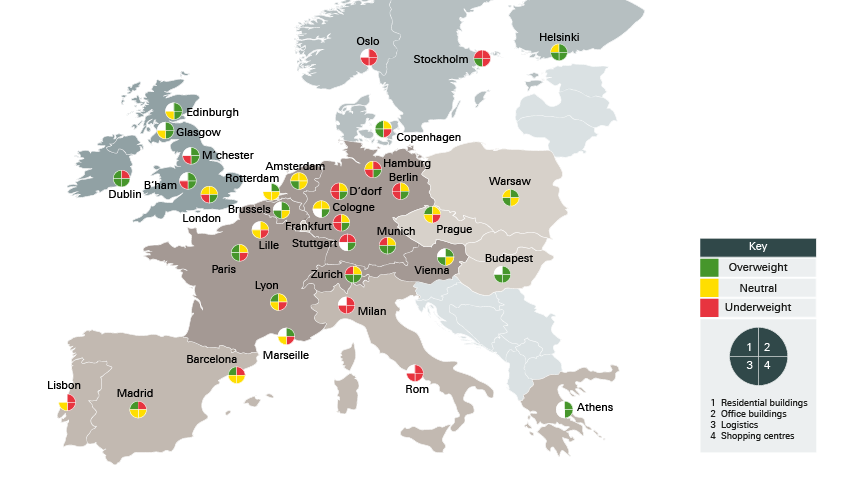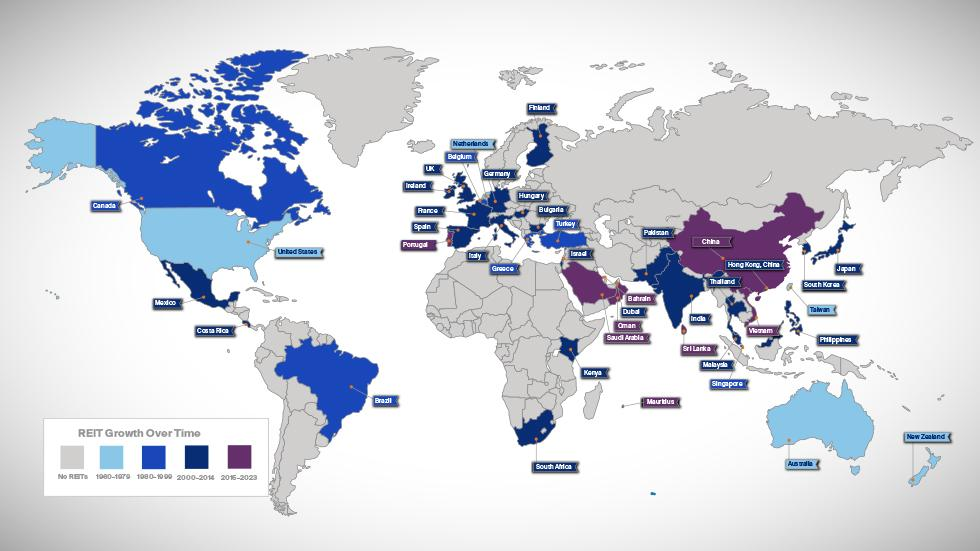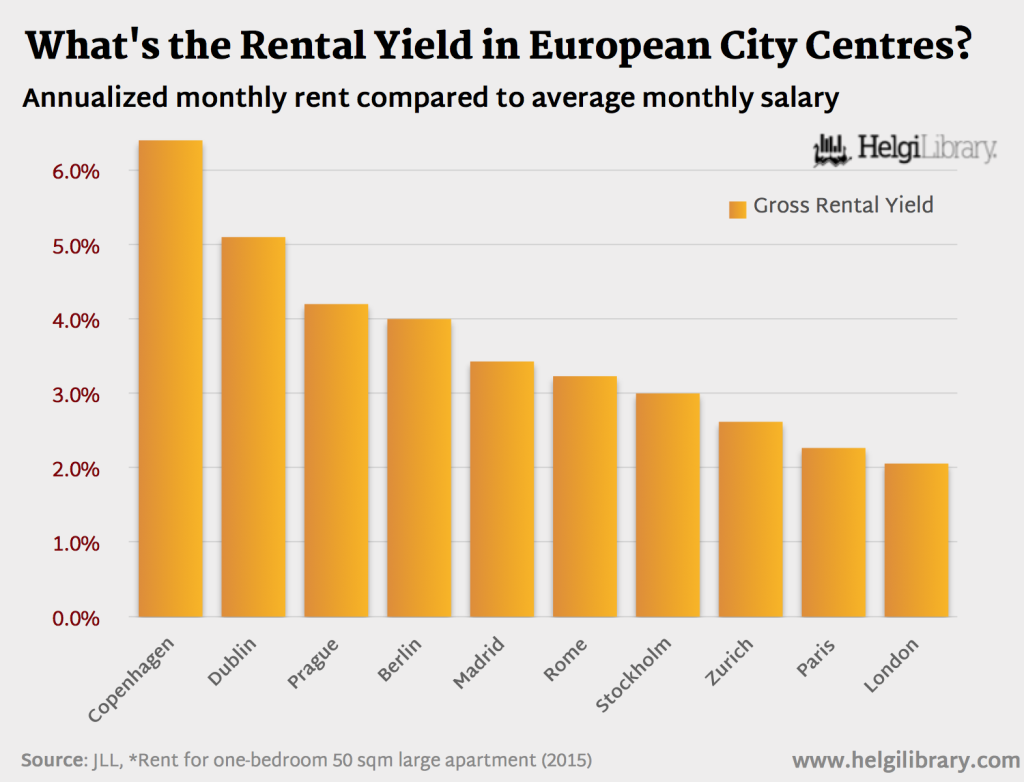1A. Globaler Inhalt: Was ist Immobilieninvestition?
Lesson Learning Objectives:
- Grasp the fundamentals of real estate investing, which involves purchasing, owning, and managing properties to generate income or achieve capital gains.
- Understand the variety of real estate investment types globally, from residential and commercial properties to land investments.
- Learn about the global diversity in real estate markets, including the impact of local market trends, tax policies, and legal regulations on investment strategies.
- Recognize the role of REITs in global real estate markets, understanding their historical growth and regional variations.
- Identify best practices for global real estate investing, including market research, technological tools, and portfolio diversification strategies.
1A. What is Real Estate Investing?
Real estate investing globally follows similar principles—purchasing, owning, and managing property for profit—whether through rental income or capital gains. However, the specifics of investing, such as market trends, tax policies, and legal regulations, differ from country to country.
Types of Real Estate Investments Globally
- Residential Properties: Buying homes or apartments to rent out or sell for a profit is a common form of real estate investing worldwide. This can range from single-family homes to multi-unit buildings.
- Commercial Properties: Offices, retail spaces, and industrial properties are examples of commercial real estate investments, providing businesses with space to operate while generating rental income for the owner.
- Land Investment: Investing in undeveloped land with the intention of developing it or selling it at a later time is another form of real estate investing, particularly popular in rapidly growing urban areas globally.

Figur: European Real Estate Market Overview by Asset Type
Beschreibung:
This map illustrates the performance of different real estate asset types (residential buildings, office buildings, logistics, and shopping centers) across major European cities. The pie charts represent market sentiment for each asset type using color coding: green for overweight (positive sentiment), yellow for neutral, Und red for underweight (negative sentiment). The key enables users to understand which sectors are thriving or underperforming in various cities, offering a geographical view of real estate trends.
Die zentralen Thesen:
- Residential buildings show strength in several regions, highlighted by the prevalence of green.
- Office buildings Und logistics vary in performance, with some cities showing positive momentum and others neutral or underperforming.
- Shopping centers tend to have a higher proportion of red, indicating weaker performance.
- Regional differences are evident, reflecting economic, demographic, and market-specific factors.
- Cities like London, Paris, and Berlin display diverse asset performance, reflecting complex real estate markets.
Application of Information:
This data helps investors identify Markttrends and assess the performance of asset types across Europe. By understanding regional strengths and weaknesses, users can make fundierte Entscheidungen about where to invest or diversify. It is also useful for tracking sector-specific trends, such as growth in logistics driven by e-commerce or challenges in retail due to changing consumer behavior.
Key Factors for Global Investors:
- Marktbedingungen: Real estate markets fluctuate based on supply and demand, interest rates, and the economy’s performance. For example, booming real estate markets like New York City oder Singapore can see higher appreciation and rental yields, but they also come with higher entry costs.
- Currency Fluctuations: For international investors, currency risk can affect the overall returns on their real estate investments. Exchange rate fluctuations between local currencies and foreign investments need to be considered.
- Legal Considerations: Property ownership laws vary globally. Some countries restrict foreign ownership of land or property, while others, such as Australien Und Kanada, welcome international real estate investors under certain conditions.
Global Real Estate Market Example
In countries like China, real estate is seen as a cornerstone of personal wealth, with property values in cities like Shanghai rising significantly over the past few decades. In contrast, countries such as Brazil oder Mexico may offer investors high rental yields due to growing urbanization and a young population, despite a less developed regulatory framework.

Figur: Global REIT Growth Over Time
Beschreibung:
This map illustrates the historical growth and expansion of Real Estate Investment Trusts (REITs) globally from 1960 to 2023. The color coding highlights the periods when REIT markets were established in various regions: light blue for earlier periods (1960-1975), darker blue for mid-years (1976-2020), and purple for recent growth (2000-2023). Countries without REITs are marked in gray, indicating markets yet to develop this investment structure. Each labeled country provides context for REIT activity and regional market maturity.
Die zentralen Thesen:
- North America (United States and Canada) pioneered REIT markets, beginning in the 1960s.
- Europe saw REIT growth predominantly in the 2000s, with countries like France, the UK, and Germany becoming key players.
- Asia-Pacific regions such as Japan, Hong Kong, and Australia have mature REIT markets, with significant activity in the last few decades.
- Emerging markets, such as China and India, display recent REIT adoption, reflecting ongoing market evolution.
- Some regions (gray areas) remain untapped, showing potential for future REIT introduction and growth.
Application of Information:
This map is a powerful tool for understanding the evolution and maturity of global REIT markets. Investors can use this information to identify established markets for stability Und emerging markets for growth opportunities. It highlights where REIT structures are gaining traction and can guide strategies for portfolio diversification. Recognizing REIT adoption timelines helps forecast trends and potential new market entrants.
Taxation Worldwide
Different countries impose various forms of taxes on real estate, such as property taxes, capital gains taxes, Und stamp duties. For instance, Australien imposes stamp duty on property purchases, while the U.S. has a Kapitalertragssteuer on profits from property sales. Investors must familiarize themselves with local tax laws to make informed decisions.
Best Practices for Global Real Estate Investing
- Research Local Markets: Global investors should conduct thorough research into the local real estate market they plan to invest in, analyzing factors like property demand, vacancy rates, and local economic growth.
- Leverage Technology: Many global investors utilize online platforms and real estate technology, such as property management software and virtual tours, to invest remotely.
- Diversify Portfolio: Diversification across different regions or property types (residential, commercial, etc.) can reduce the risk of market downturns in any one area.

Figure: What’s the Rental Yield in European City Centres?
Beschreibung:
This chart compares the annualized gross rental yield of one-bedroom apartments (50 sqm) in major European city centers to the average monthly salary. It highlights variations in rental profitability across cities, showcasing cities like Copenhagen and Dublin at the higher end of yields.
Die zentralen Thesen:
- Copenhagen offers the highest gross rental yield at over 6%, indicating strong rental profitability.
- Dublin follows closely with yields exceeding 5%, showcasing robust rental market returns.
- Cities like Prague, Berlin, and Madrid provide mid-range rental yields around 4%, reflecting balanced opportunities.
- Major financial hubs like London and Paris have lower rental yields under 3%, suggesting high property values relative to rental income.
- Yields vary significantly based on regional economic conditions, rental demand, and salary levels.
Application of Information:
This analysis is critical for investors seeking to evaluate rental market performance across Europe. Higher yields suggest cities with strong rental returns, while lower yields may point to mature, high-value markets. The data helps investors identify where to maximize rental income or balance property appreciation with cash flow. This is also a useful metric for policymakers and urban planners aiming to address housing affordability.
Wichtige Unterrichtsinformationen:
- Real estate investment encompasses a range of strategies including buying, renting, and selling residential, commercial, and land assets.
- Marktbedingungen, including supply and demand dynamics, significantly influence property values and investment viability across different regions.
- Legal and tax considerations vary widely by country, impacting the overall profitability and operational aspects of real estate investments.
- REITs represent a significant component of the global real estate market, providing opportunities for investment in diverse property portfolios.
- Effective real estate investing requires thorough local market research, leveraging modern technologies, and maintaining a diversified investment portfolio to mitigate risks and enhance returns.
Schlusserklärung:
Global real estate investing offers a spectrum of opportunities that require an understanding of both universal principles and localized specifics. By mastering these aspects, investors can strategically navigate diverse markets to optimize their investment outcomes.

